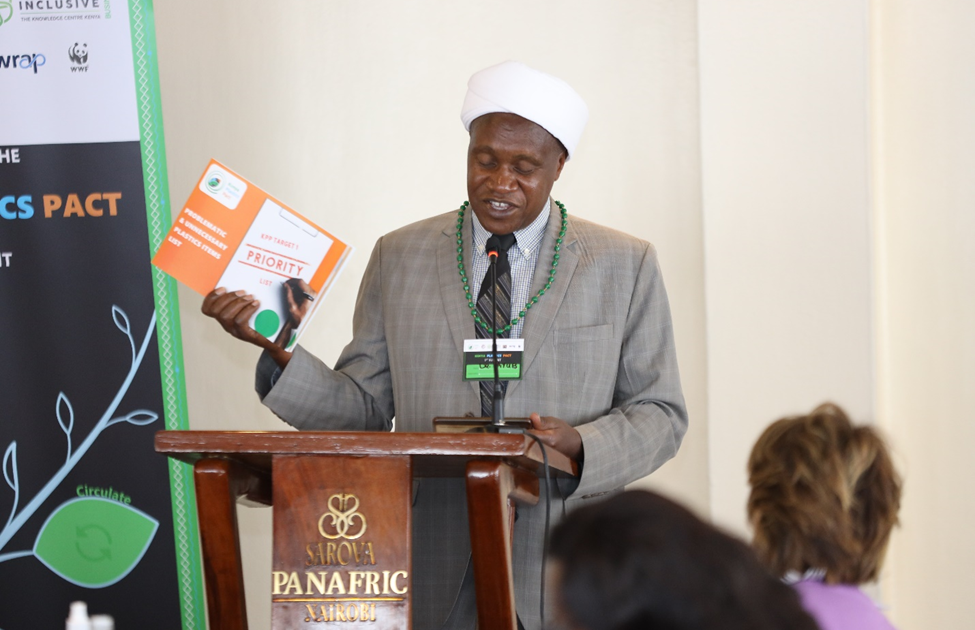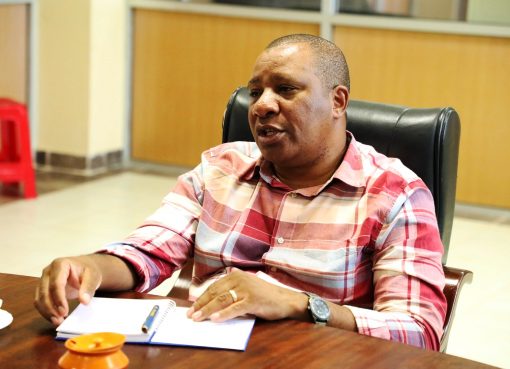The Kenya Plastics Pact (KPP) has published a list of problematic and unnecessary plastic items to be eliminated in Kenya.
This adds to the already existing government’s plastic bag ban that came into force in 2017 and the ban on selected single-use plastic items in protected areas from June 2020.
The priority list supports a collective plan to meet the target of phasing out problematic and unnecessary plastic items by 2030 and has been endorsed by the Government through the Ministry of Environment and Forestry and 39 Kenya Plastics Pact business members and supporters.
The priority list is disaggregated into plastic packaging items, non-packaging plastic items and additives.
The plastic packaging items listed include all polystyrene (PS) packaging, polyvinyl chloride (PVC) rigid packaging (including bottles), Expanded Polystyrene (EPS), plastic packaging for fast foods, Polyethylene Terephthalate Glycol (PETG) in rigid packaging, secondary plastic cling film on takeaway packaging.
Others include consumer plastic multi-wrap around cans, tins, bottles, and cartons for multi-sales, PETG and PVC shrink sleeves on PET bottles, while items under non-packaging plastic are disposable plastic cutlery, disposable plastic plates and bowls, plastic straws, plastic stirrers, and plastic cotton bud sticks. Those under the plastic additives category are Oxo-degradable plastics products.
The plastic items under the current ban in protected areas have been included, since they are problematic (have no value for collection as they are limited, cannot be recycled or are contaminated for recycling, thus end up in the environment) and unnecessary and there are alternatives already available, an indication that there could be a total ban in the near future.
“During the 2nd Oceans Conference in Lisbon in June 2022, Kenya announced its intention to join the Global Commitment on Plastics that is spearheaded by UNEP and the Ellen McArthur Foundation.
As an initial step, the country is expected to declare its plastics reduction targets and the government will work closely with the Kenya Plastics Pact to propose realistic targets,” said the Environment and Forestry PS Dr. Chris Kiptoo
In a speech read on his behalf by the Director of Environmental Education and Awareness at the Ministry Dr. Ayub Macharia, the PS appealed to the producers trading with plastic items to take necessary action.
“This is indeed an important step towards sound management and use of plastics in Kenya. I commend all members and supporters for being proactive and grabbing this opportunity for the betterment of Kenya,” he added.
Plastic pollution is now a global crisis that demands a systems approach to combat it. Materials production and disposal, including plastics, remain a complex challenge that our generation is confronted with. It is just one part of the triple challenge of – climate change, biodiversity loss and pollution – which are existential threats to our survival as humans on our shared planet.
The world currently produces 400 million tonnes of plastics per year, while only less than 10% is recycled. It is estimated that if the status quo is maintained, by 2050 we will have more plastic in oceans than fish. Marine organisms such as turtles, fish and seabirds, are ingesting plastic with tragic results.
Microplastics are also building up along the food chain and this is likely to have adverse effects on humanity and biodiversity.
According to the Kenya Plastics Pact Program Manager Ebenezer Amadi, “Phasing out problematic and unnecessary single-use plastic packaging is essential to shift our economy and community to more durable, reusable, and recyclable packaging. By tackling these problematic items, we will also reduce packaging consumption and waste, improve the economics of recycling, increase employment, lift recycling rates and help boost recycled content in packaging.”
Furthermore, the Kenya Plastics Pact (KPP) supports the operationalization of the Extended Producer Responsibility (EPR) schemes under which plastics are subject. Once enacted, EPR will eliminate laggards towards the transition to a circular economy that has proven potential to activate new business models and generate job opportunities in waste management.
On his part Macharia said, “We are excited that this initiative integrated the new developments in waste management to arrive at the four targets to be achieved by 2030, whose targets is to eliminate unnecessary or problematic single-use plastic packaging items through redesign, innovation, and reuse delivery models.”
He added that the initiative also aims to ensure that 100% of plastic packaging is reusable or recyclable and 40 % of plastic packaging is effectively recycled.
“The Ministry will continue to work closely with KPP to ensure progress towards a Kenya free of plastics pollution. To achieve this, we need more private sector stakeholders to join the initiative as they would benefit from scientific benchmarking to progress towards sustainable development,” emphasized Macharia.
His sentiments were echoed by WWF-Kenya CEO Mohamed Awer who noted that the Keya Plastics Pact is an important strategy that must be pursued in parallel with other strategies such as the EPR and other legally binding and voluntary schemes to achieve a truly circular economy for plastics.
“To ultimately achieve the reality of No Plastic in Nature, we will need all hands on deck starting with companies, policymakers, cities’ officials and the public to do their part to grow sustainable, accessible, and inclusive circular economy systems. We need to appreciate the unique challenges within the Kenya context and apply locally-led solutions to accelerate the transition to a circular economy in Kenya,” he stressed.
By Joseph Ng’ang’a





